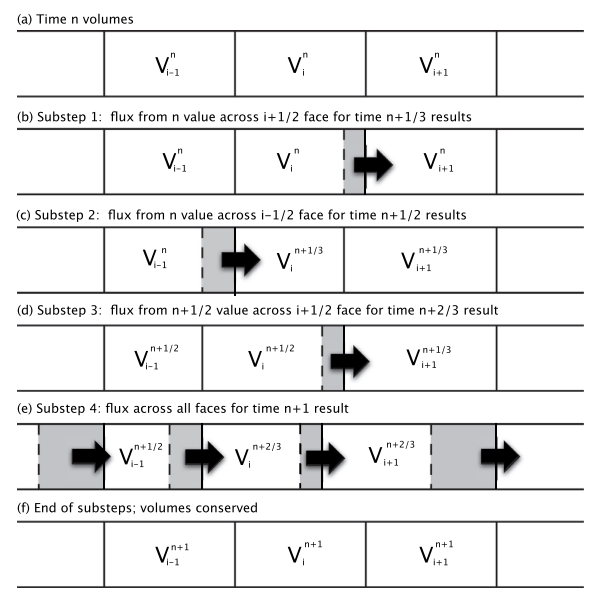A new approach to the local time stepping problem for scalar transport
ABSTRACT: A new scalar transport method is proposed to reduce computational time when a large number of scalars are transported in coupled hydrodynamic-ecosystem models. The new Local Mass Transport (LMT) method confines subtime transport computations to regions where the local Courant–Freidrichs–Lewy (CFL) number exceeds a given numerical stability criteria for a global (large) time step, but the method does not require either contiguous regions or special boundary algorithms between regions as used in previous Local Time Stepping (LTS) approaches. The new method uses conservative transport of mass rather than dissolved concentration. This approach allows different faces of a single grid cell to use different subtime steps. The new LMT method is further extended to include background filtering (LMTB) so that scalars below a pre-defined background concentration are ignored in transport calculations. This new approach can further reduce computational time where large regions are at or below an irrelevant background concentration. Both LMT and LMTB methods can be more computationally efficient than global subtime stepping.
Figure 2.

Fig. 2. Volume fluxes during LMT substeps in Table 2. Gray areas are volumes moved between grid cells, in (b) and (d) flux areas are \Delta t q*/3; in (c) flux area is \Delta t q*/2; in (e) flux areas are \delta t q*; \Delta t q*/2, \Delta t q*/3, and \Delta t q*, respectively, from left to right.
Figure 23.

Fig. 23. Total computational time per time step for transport of 41 scalars, normalized by hydrodynamic computational time T_{hydro} in the same step.

